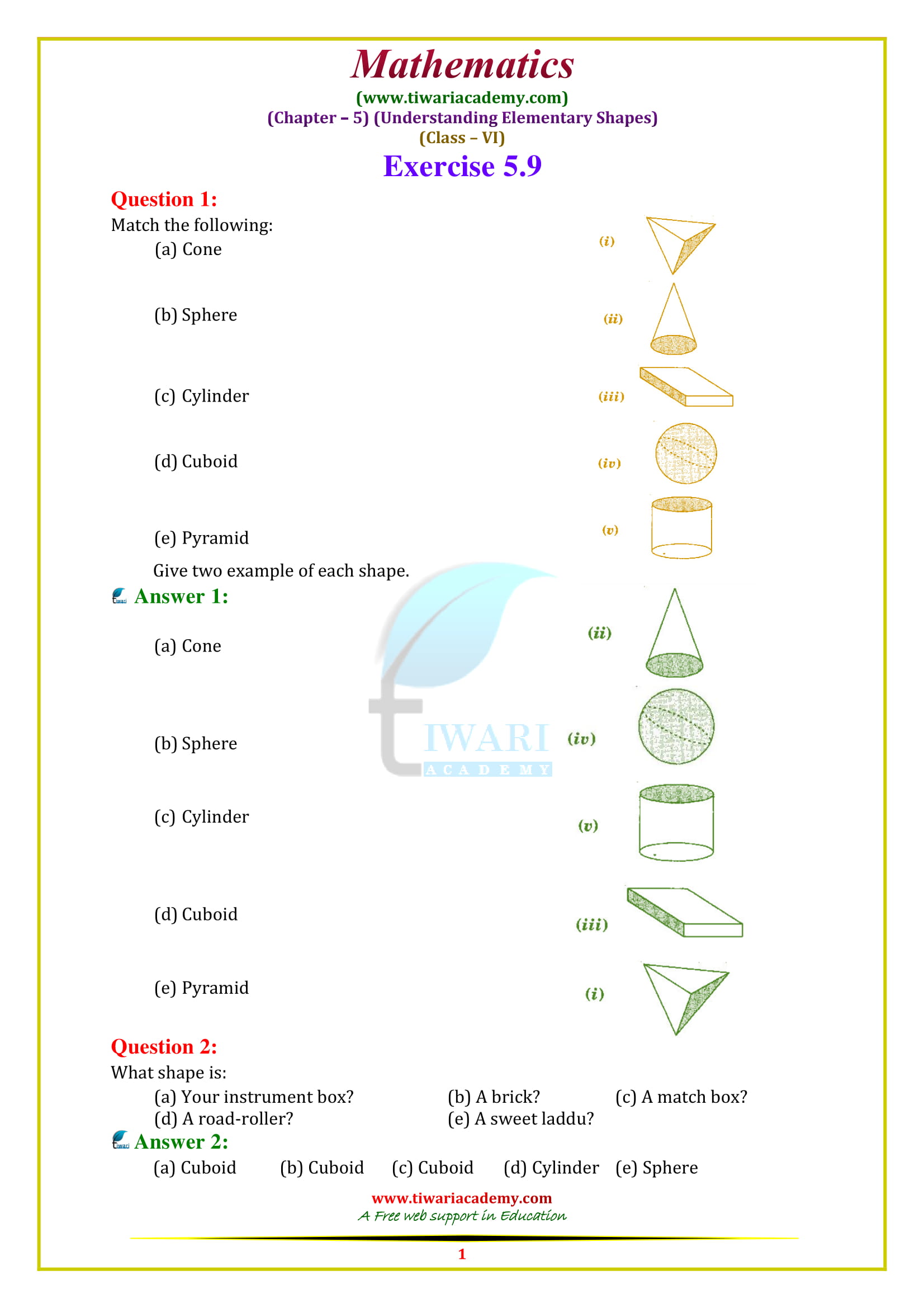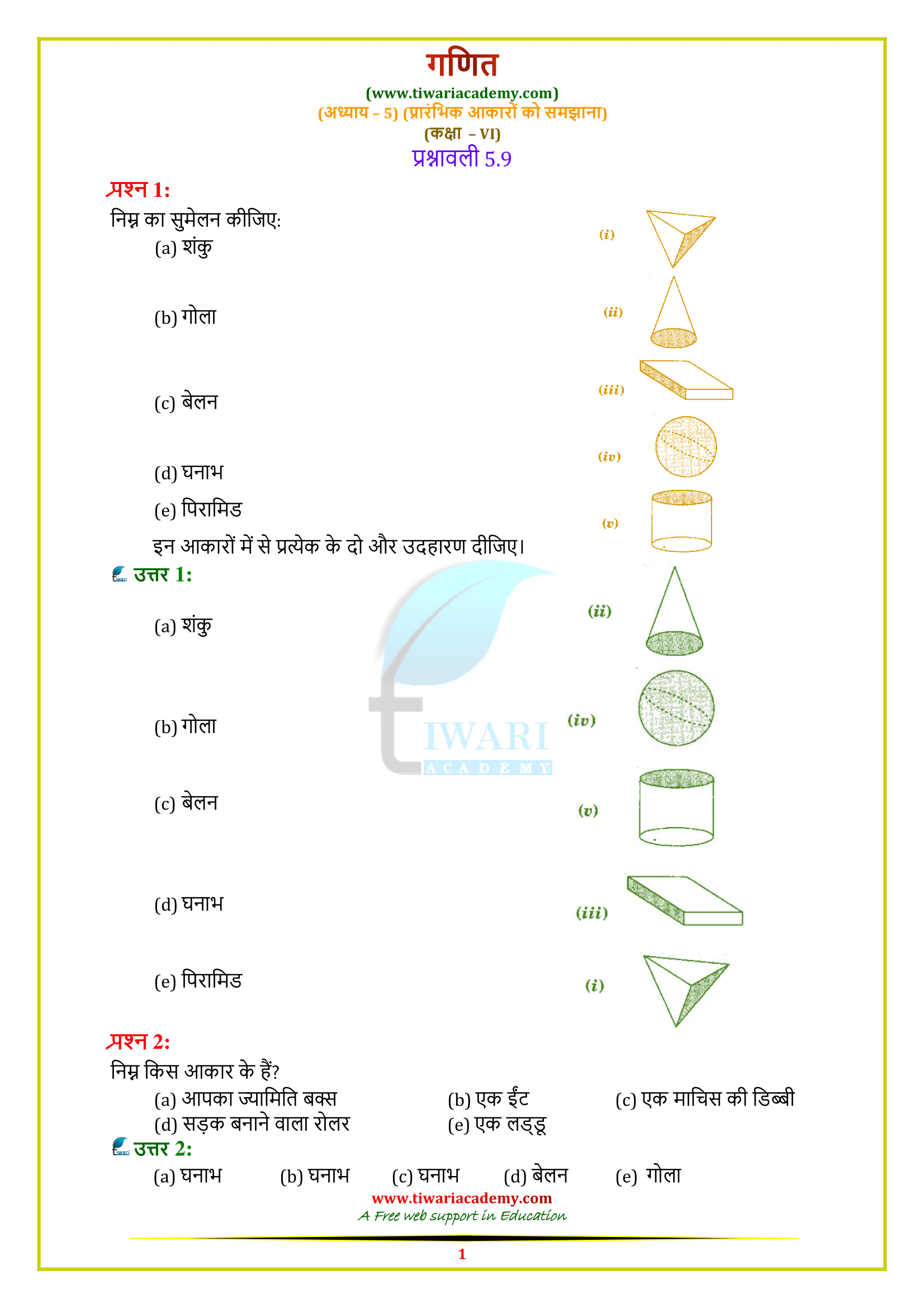NCERT Solutions for Class 6 Maths Chapter 5 Exercise 5.9 Understanding Elementary Shapes in Hindi and English Medium updated for CBSE and State Boards. Access latest Class 6 Maths NCERT Solutions for Chapter 5 Exercise 5.9 on Elementary Shapes at Tiwari Academy. Available in Hindi and English for CBSE and State Board students. Simplified explanations to enhance your understanding.
6th Maths Exercise 5.9 Solution in Hindi and English Medium
Class 6 Maths Chapter 5 Exercise 5.9 Solution
Class VI Mathematics NCERT Ex. 5.9 of Understanding Elementary Shapes in in PDF format free to use online or download. In NCERT class 6 mathematics exercise 5.9, we will study about cone, pyramid, cylinder, sphere, and cube-cuboid like three dimensional figures. There are only two questions given in exercise 5.9, which are based on observation. We have solved these two questions by very simple method.
| Class: 6 | Mathematics |
| Chapter: 5 | Exercise: 5.9 |
| Topic: | Understanding Elementary Shapes |
| Content Type: | Videos and PDF Solutions |
| Medium: | Hindi and English Medium |
Triangular Prism
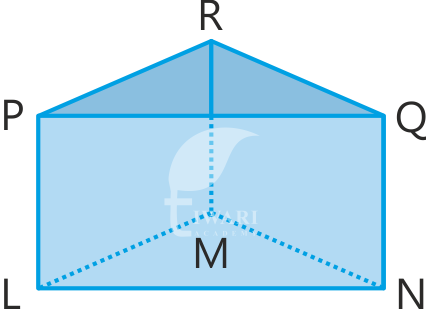
A solid whose lateral faces are rectangular and the bases are
congruent triangles, is called a triangular prism. The Fig. 15.7
shows a triangular prism, denoted by LMNPQR.
A triangular prism has 6 vertices, 3 rectangular lateral faces, 2 triangular bases and 9 edges.
Pyramid
A pyramid is a solid whose base is a plane rectilinear figure and whose side faces are triangles having a common vertex, called the vertex of the pyramid.
The length of perpendicular drawn from the vertex of a pyramid to its base is called the height of the pyramid. The side faces of a pyramid are called its lateral faces.
Triangular Pyramid
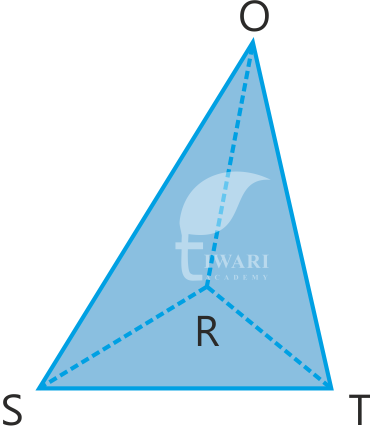
Class 6 Maths Exercise 5.9 Important Questions with Answer
Prisms have rectangular lateral faces and pyramids have triangular lateral faces. In most cases, the lateral faces of both prisms and pyramids are angled toward the base or bases. … The lateral faces are congruent triangles on a “right pyramid.”
What is a face of a prism or pyramid?
A prism or pyramid is named for the shape of its base. face. Each flat side of a polyhedron is called a face. For example, a cube has 6 faces, and they are all squares.
What are the types of pyramids?
Types of Pyramids:
- Triangular Pyramid.
- Square Pyramid.
- Pentagonal Pyramid.
- Right Pyramid.
- Oblique Pyramid.
Do prisms and pyramids have volume?
As we already saw, the volume of a prism is the area of the base times the height of the prism. The volume of the pyramid has the same base area and height as the prism, but with less volume than the prism. The volume of the pyramid is one third the volume of the prism.
A solid whose base is a triangle and whose side faces are triangles having a common vertex is called a triangular pyramid.
The Figure shows a triangular pyramid ORST with O as vertex and RST as its base. A triangular pyramid has 3 triangular lateral faces, one triangular base and 6 edges.
Square Pyramid
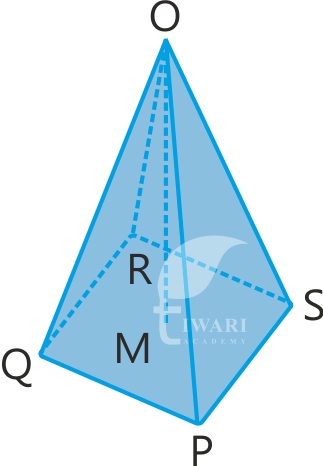
Class 6 Maths Exercise 5.9 Important Extra Questions
How many pyramids fit into a prism?
Three pyramids
The contents of three conical cups exactly fill a cylinder of the same radius and height. The contents of three pyramids with rectangular bases exactly fill a prism of the same base and height.
How can you identify a prism?
A prism is a type of three-dimensional (3D) shape with flat sides. It has two ends that are the same shape and size (and look like a 2D shape). It has the same cross-section all along the shape from end to end; that means if you cut through it you would see the same 2D shape as on either end
Is a cube a prism?
A cube is still a prism. A cube is just a special case of a square prism, and. A square prism is just a special case of a rectangular prism, and. They are all cuboids!
What are the types of Prism?
Prism are mainly two types:
(i) Regular Prism:
(ii) Irregular Prism.
According shape Prism are many types as:
1. Triangular prism (has triangular bases)
2. Square prism (has square bases)
3. Rectangular prism (has rectangular bases)
4. Pentagonal prism (has pentagonal bases)
5. Hexagonal prism (has hexagonal bases)
A solid whose base is a square and whose side faces are triangles having a common vertex is called a square pyramid.
The Fig. shows a square pyramid OPQRS with O as vertex. The square pyramid has 4 lateral triangular faces, one square base and 8 edges.
What will students learn in exercise 5.9 of class 6th Maths?
In exercise 5.9 of class 6th Maths, students learn about three-dimensional shapes. Some examples of three-dimensional shapes are sphere, cone, cube, cuboid, cylinder, cone, pyramid, etc.
Is exercise 5.9 of NCERT Class 6 Maths tough to solve?
No, exercise 5.9 is not at all tough. It is a very easy exercise. Exercise 5.9 of class 6th Maths has only two short questions and no examples.
How much time is required to complete Class 6 Maths Exercise 5.9?
A maximum of 1 hour is required to complete exercise 5.9 of grade 6th Maths because exercise 5.9 has only two questions. Both the questions of this exercise are good and easy.
Which question of exercise 5.9 of class 6th Maths is the best for terminal exams?
Exercise 5.9 of class 6th Maths has 2 questions. Question 1 of this exercise is the best and important question of this exercise. Also, question 1 has a chance to come in the exams.
